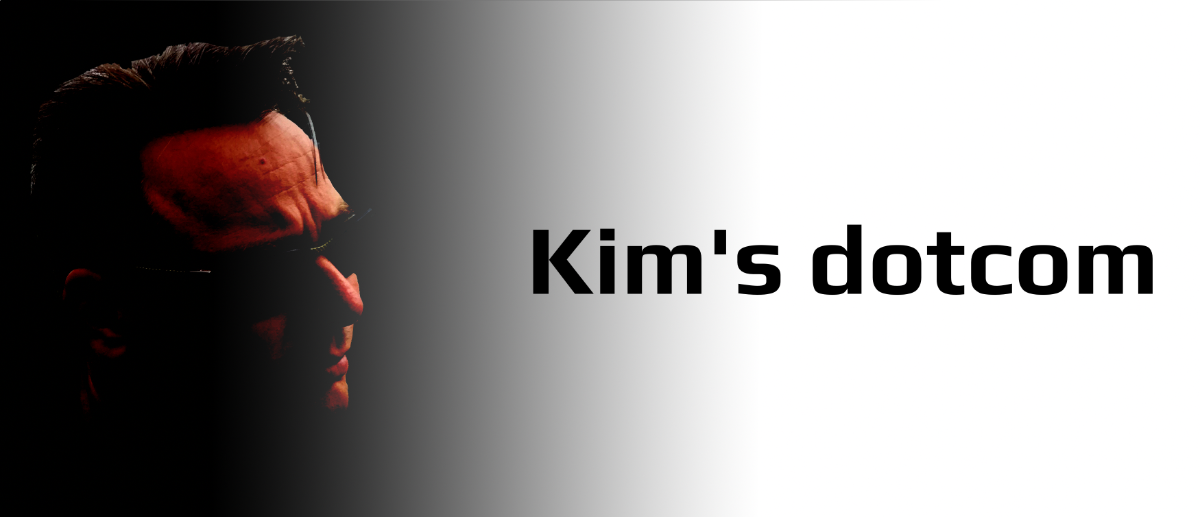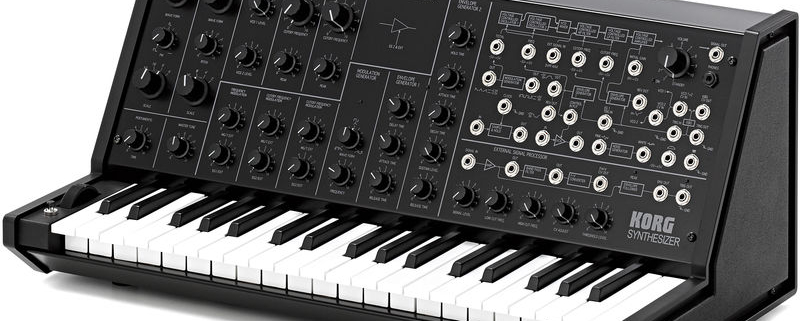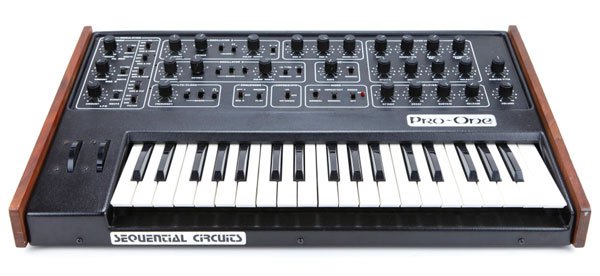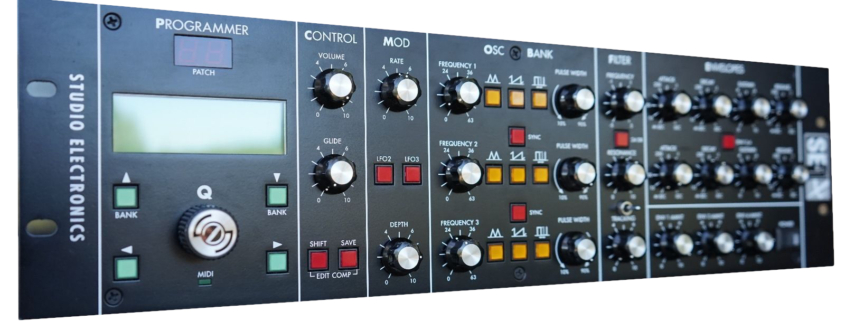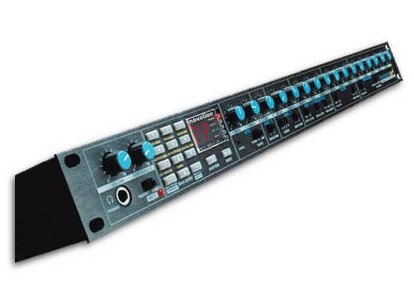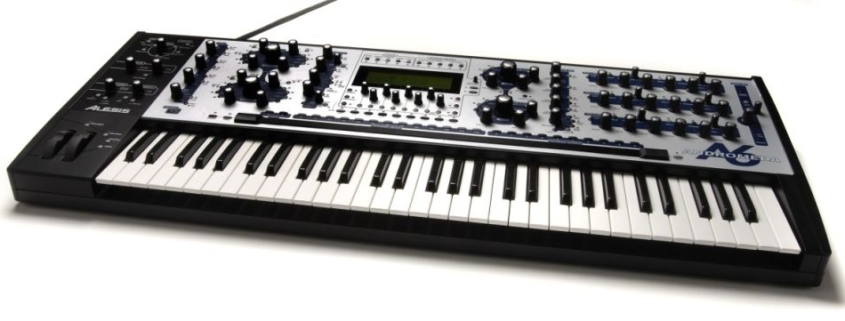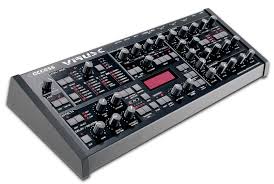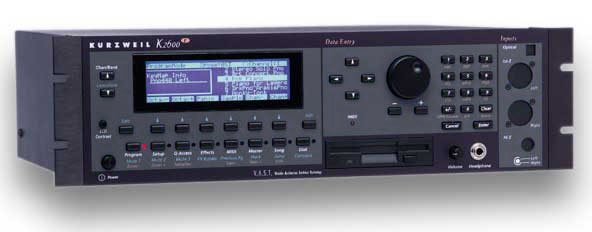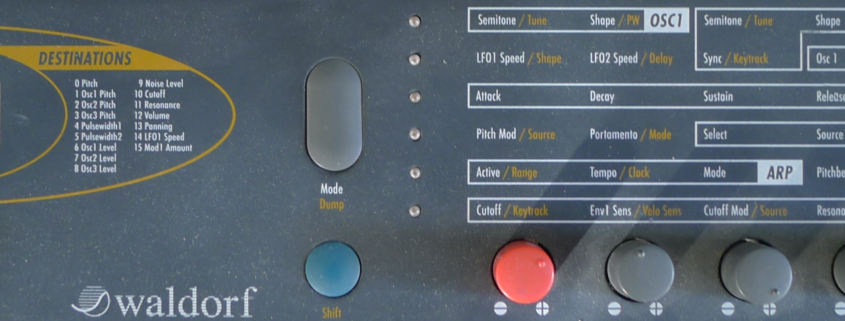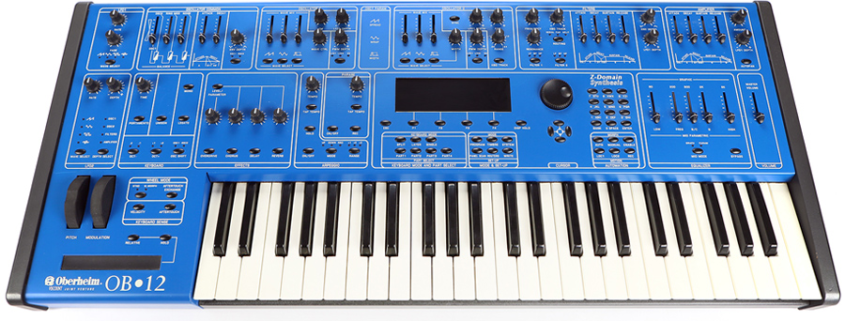I saw one for sale in my own home town. I haven’t previously even seen one for sale in my home country, so I thought this would be a great chance to get a real classic analog synth and actually get to test it before buying, instead of having to wait for the postman for two weeks while wondering what he actually might be bringing. Of course, when I contacted the seller, it was already sold. I happened to chek out the German eBay, only to notice there were a bunch of these up for grabs. The one I gave the winning bid on (and which was located in Switzerland) was almost 300 euro cheaper than the one for sale locally, plus I got a friend of mine to bring it to me along with the rest of his stuff when he moved back to Finland.
It’s a “half-modular” synth, meaning that there’s the standard hardwired signal path, which you control with knobs, and then there are patch points in the signal path where you can insert physical cords to redirect the signal, just like in a modular system. This makes it really versatile and a fun sound creating tool. The patch points obviously allow you to patch in signals from other sound sources as well. This one appears to be a real screamer. I expect to have a lot of fun with it. Haha.
